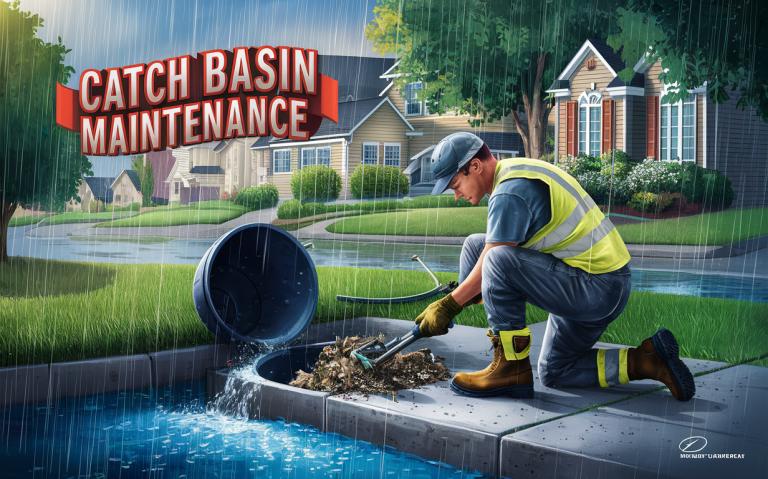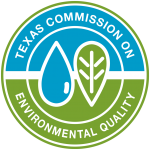Environmental Compliance for Businesses: Comprehensive Guide
Environmental compliance for businesses: Learn key regulations, benefits, and best practices for sustainable and legal adherence.
Meeting environmental compliance is a key responsibility for businesses today. It involves adhering to environmental regulations and standards set by government bodies to minimize the negative impact of industrial activities on the environment. Compliance ensures not only legal safety but also promotes sustainable practices, safeguarding the planet for future generations.
Table of Contents
Key Takeaway
- Environmental compliance ensures businesses adhere to environmental laws and regulations.
- It promotes sustainability and reduces harmful environmental impacts.
- Compliance offers benefits like risk mitigation, operational efficiency, and improved brand reputation.
- Businesses across various sectors, including manufacturing, retail, and services, need to comply with environmental regulations.
What is Environmental Compliance for Businesses?

Environmental compliance refers to the measures that businesses take to comply with environmental laws, regulations, and standards. These laws are put in place to reduce pollution, conserve natural resources, and protect ecosystems. Compliance can include actions like reducing emissions, managing waste responsibly, and ensuring safe storage of hazardous materials.
Why Environmental Compliance for Businesses Matters

Protecting Public Health
By following environmental regulations, businesses help reduce pollutants and toxins that can harm public health. Clean air, safe drinking water, and reduced exposure to hazardous substances all stem from strict compliance with environmental standards.
Enhancing Brand Reputation
Companies known for their environmental responsibility often enjoy a better reputation. Consumers are increasingly favoring businesses that demonstrate sustainable practices, which can result in higher customer loyalty and sales.
Avoiding Legal Penalties
Non-compliance can lead to hefty fines, legal action, and even forced shutdowns. Regulatory bodies, such as the Environmental Protection Agency (EPA), closely monitor businesses to ensure they follow the set guidelines. Maintaining compliance avoids these severe repercussions.
Promoting Sustainability
Environmental compliance encourages businesses to adopt sustainable practices. This includes reducing waste, using resources efficiently, and lowering carbon footprints, which all contribute to long-term environmental sustainability.
Key Environmental Regulations for Businesses
Businesses must be aware of several key environmental regulations to ensure compliance. Here are some of the most significant ones:
Clean Air Act (CAA)
The Clean Air Act regulates air emissions from stationary and mobile sources. It sets limits on pollutants to ensure air quality is safe for public health and the environment.
Clean Water Act (CWA)
The Clean Water Act governs water pollution to protect surface waters. It sets wastewater standards and regulates discharges into bodies of water to prevent harmful pollutants from contaminating water resources.
Resource Conservation and Recovery Act (RCRA)
The Resource Conservation and Recovery Act controls the disposal of solid and hazardous waste. Businesses must follow guidelines on waste management to minimize environmental impacts.
Safe Drinking Water Act (SDWA)
The Safe Drinking Water Act aims to protect the quality of drinking water in the U.S. It sets standards for water quality and requires regular monitoring and reporting of water pollutants.
Steps to Achieve Environmental Compliance for Businesses
Conducting Environmental Audits
An environmental audit helps identify areas where a business might be non-compliant. It involves reviewing operational processes, waste management, and emission levels to ensure they meet required standards.
Implementing Corrective Actions
After identifying non-compliant areas, businesses must implement corrective actions. This may include upgrading equipment, changing operational procedures, or improving waste management practices.
Training Employees
Ensuring environmental compliance is a collective effort. Training employees about environmental laws and best practices is crucial. This ensures everyone understands their role in maintaining compliance.
Regular Monitoring and Reporting
Continuous monitoring and regular reporting are essential. Businesses must regularly check their compliance status and report any issues to the relevant authorities to avoid penalties.
Using Eco-Friendly Technologies
Adopting eco-friendly technologies can help businesses reduce their environmental footprint. This may include energy-efficient machinery, renewable energy sources, and waste recycling systems.
Common Challenges in Environmental Compliance for Businesses
Keeping Up with Regulations
Environmental laws and regulations can change frequently. Businesses must stay updated with the latest changes to ensure ongoing compliance.
High Costs of Compliance
Implementing compliance measures can be costly, especially for small businesses. However, the long-term benefits often outweigh the initial investment.
Lack of Expertise
Not all businesses have in-house expertise on environmental regulations. Hiring consultants or outsourcing compliance tasks can help bridge this gap.
Resistance to Change
Implementing new compliance measures can face resistance from employees. Effective communication and training can help overcome this challenge.
Benefits of Environmental Compliance for Businesses

Operational Efficiency
Compliance often leads to more efficient operations. For instance, waste reduction and energy-saving measures can lower operational costs.
Risk Mitigation
By adhering to environmental laws, businesses can mitigate risks associated with legal penalties and environmental damage.
Competitive Advantage
Businesses that prioritize environmental compliance can stand out from competitors. They may attract environmentally conscious customers and investors.
Employee Morale
Employees often feel more motivated to work for a company that values environmental responsibility. This can boost morale and productivity.
Long-Term Sustainability
Compliance ensures that businesses operate sustainably, protecting resources for future generations.
Environmental Compliance in Different Sectors
Manufacturing
Manufacturing industries must manage emissions, waste, and resource use efficiently. Compliance includes using cleaner production techniques and adhering to waste disposal regulations.
Retail
Retail businesses must manage waste, especially packaging materials, and ensure products meet environmental standards. Compliance can also involve energy-efficient store operations.
Construction
The construction sector must follow regulations related to site management, waste disposal, and emissions. Sustainable construction practices, such as using eco-friendly materials, are also important.
Transportation
Transportation businesses must manage vehicle emissions and fuel efficiency. Compliance includes adhering to emission standards and using cleaner fuels.
Small Businesses
Small businesses, though often with limited resources, must still comply with environmental regulations. Simple actions like reducing waste and using energy-efficient equipment can make a significant difference.
Environmental Compliance for Businesses Checklist
Here’s an environmental compliance checklist for businesses:
- Conduct regular environmental audits.
- Implement corrective actions for non-compliant areas.
- Train employees on environmental laws and practices.
- Monitor and report compliance status regularly.
- Adopt eco-friendly technologies.
- Stay updated with regulatory changes.
- Hire environmental consultants if needed.
Environmental Regulations and Their Impact
| Regulation | Purpose | Impact on Businesses |
|---|---|---|
| Clean Air Act (CAA) | Regulates air emissions | Requires businesses to monitor and control air pollutants |
| Clean Water Act (CWA) | Governs water pollution | Sets standards for wastewater discharge and protects water bodies |
| Resource Conservation and Recovery Act (RCRA) | Manages hazardous waste disposal | Ensures proper handling and disposal of hazardous materials |
| Safe Drinking Water Act (SDWA) | Protects drinking water quality | Requires regular monitoring and reporting of water pollutants |
| Toxic Substances Control Act (TSCA) | Regulates chemical substances | Controls the use and disposal of toxic chemicals |
Benefits of Environmental Compliance
| Benefit | Description |
|---|---|
| Operational Efficiency | Reduces waste and energy use, lowering operational costs |
| Risk Mitigation | Avoids legal penalties and environmental damage |
| Competitive Advantage | Attracts environmentally conscious customers and investors |
| Employee Morale | Boosts motivation and productivity by working for a responsible company |
| Long-Term Sustainability | Ensures sustainable use of resources and protects the environment for future generations |
Conclusion
Environmental compliance is not just a legal obligation but a pathway to sustainable business practices. By adhering to environmental regulations, businesses can protect public health, enhance their reputation, and contribute to long-term sustainability. Whether you are in manufacturing, retail, construction, transportation, or any other sector, prioritizing environmental compliance is essential for success in today’s eco-conscious world.
For more information, you can visit our website or contact us.





 Texway Wastewater Services is a septic, wastewater, and excavation company based out of Burleson, Texas and serving the surrounding areas. We specialize in
Texway Wastewater Services is a septic, wastewater, and excavation company based out of Burleson, Texas and serving the surrounding areas. We specialize in